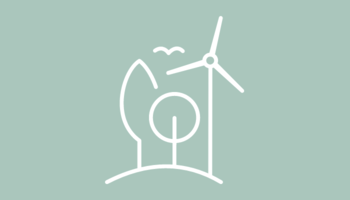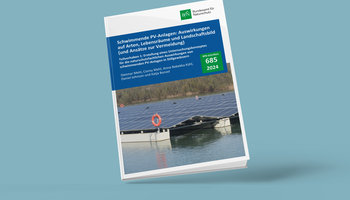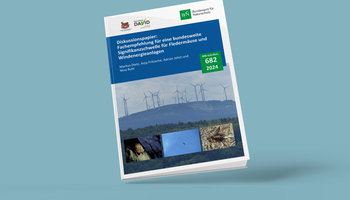The object of this research project is to establish whether and to what extent wind turbines at forest sites have a negative effect on bats, disturb them or even threaten them to a significant degree. Based on this study, measures will be suggested for building and operating wind turbines at sites with populations of sensitive species of bats nearby.
To date, planning has assumed that bats are not disturbed by the operation of wind turbines (WT). The only risk factors that have been identified are the loss of roosts and hunting habitat due to forest clearance and the collision risk. These factors are usually countered by incorporating prevention and compensation measures in the plans. However, sensitive woodland bat species, particularly those that use passive acoustic location, could be disturbed so badly by the operation of WTs (e.g. by noise emissions) that they move their field of activity away from the turbine sites. This could reduce the quality of the ecological niches in a zone extending beyond the actual cleared area. In this case compensatory measures would have to be planned over a correspondingly larger area. On the other hand, WT could produce an attraction effect, for example for the western barbastelle and other species that hunt along boundary structures.
Using at least three case studies, research will be undertaken on how bat colonies react to the construction and operation of WTs within their area of activity. A detailed study of roost and habitat use as well as colony size and population development before and after construction of the wind farm will be carried out at WTs in woodland sites with populations of the relevant species.
In order to evaluate the results from the project sites, reference studies in undisturbed populations will be carried out and additional existing data analysed.
Based on the results of the study, recommendations will be formulated for action for constructing WTs close to populations of sensitive bat species.
A colony of pug bats was studied in a wind farm before and after construction of the turbines. For this purpose, the animals were telemetered for one year before and two years after construction of the turbines. In addition, acoustic surveys were conducted at the wind turbines and at reference sites. The telemetry showed no evidence of a shift in roosting and hunting habitats. Acoustic activity also did not change due to the presence or operation of the turbines.
In addition, three colonies of the brown long-eared bat (two in planned wind farms and one in a reference area) were studied during two years. Again, several females were telemetered in each case to record roosting and hunting areas and to create habitat models. There were large differences in habitat use between the different areas and study years. The results serve as a basis for the investigations after the erection of the turbines, which are planned in the project Bats and Wind Power in the Forest III.
Freiburger Institut für angewandte Tierökologie (FRINAT) GmbH
Dunantstr. 9, 79110 Freiburg im Breisgau
Dr. Robert Brinkmann
Tel.: +49 761 20899960
brinkmann(at)frinat.de
Dipl.-Biologin Johanna Hurst
Tel.: +49 761 208 999 63
hurst(at)frinat.de
Federal Agency for Nature Conservation (BfN)
II 1.1 Zoological species protection
Konstantinstr. 110, 53179 Bonn
Sekretariat-II-1(at)BfN.de
03.04.2024
Weiter

03.04.2024
Weiter

19.03.2024
Weiter
